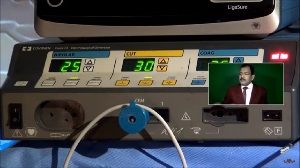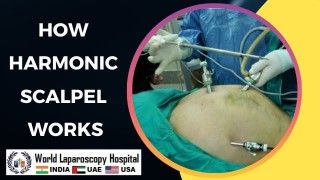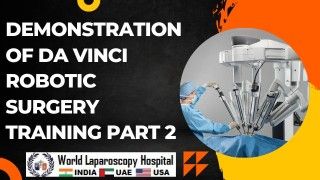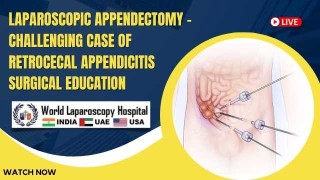Robotic Dermoid Ovarian Cystectomy for Optimal Surgical Outcomes
Add to
Share
1,336 views
Report
2 years ago
Description
Dermoid ovarian cysts are common benign growths that can develop in the ovaries, often containing a variety of tissues such as hair, skin, and even teeth. Traditionally, the surgical removal of these cysts, known as dermoid ovarian cystectomy, has been performed through open or laparoscopic approaches. However, recent advancements in surgical technology have introduced a new era of precision and efficiency with robotic dermoid ovarian cystectomy. Robotic-assisted surgery has revolutionized the field of gynecological surgery, enabling surgeons to perform complex procedures with enhanced precision, control, and visualization. In robotic dermoid ovarian cystectomy, the surgeon utilizes a robotic surgical system to maneuver miniature robotic arms equipped with specialized surgical instruments. These instruments provide a greater range of motion and dexterity than conventional laparoscopic instruments, allowing for delicate and intricate procedures within the confined space of the pelvis. The advantages of robotic dermoid ovarian cystectomy are manifold. Firstly, the three-dimensional high-definition visualization system provides a magnified and detailed view of the surgical site, allowing the surgeon to identify and precisely navigate delicate structures with enhanced accuracy. This enhanced visualization aids in the identification and preservation of vital ovarian tissue, reducing the risk of damage and preserving fertility in reproductive-age women. Secondly, the robotic system's wristed instruments offer enhanced maneuverability and mimic the natural movements of the human hand. This enables the surgeon to perform precise dissections, suture placement, and tissue manipulation, resulting in meticulous removal of the dermoid cyst while minimizing trauma to surrounding tissues. The robotic system's superior ergonomics also contribute to reduced surgeon fatigue during lengthy procedures, promoting optimal surgical outcomes. Another significant advantage of robotic dermoid ovarian cystectomy is the reduced invasiveness of the procedure. Robotic surgery allows for smaller incisions compared to open surgery, resulting in less post-operative pain, decreased blood loss, shorter hospital stays, and faster recovery times. The minimally invasive nature of the procedure enhances patient comfort and satisfaction, facilitating a quicker return to daily activities and normal life. Furthermore, robotic dermoid ovarian cystectomy offers an exceptional level of patient safety. The robotic surgical system incorporates advanced features such as tremor filtration and motion scaling, which refine the surgeon's movements and minimize the risk of inadvertent tissue injury. Additionally, the system includes a comprehensive set of safety measures, including real-time monitoring and emergency stop capabilities, ensuring patient well-being throughout the procedure. It is important to note that robotic dermoid ovarian cystectomy requires a highly skilled surgical team trained in robotic-assisted procedures. Surgeons undergo specialized training to master the robotic platform and develop proficiency in performing complex gynecological surgeries. Patient selection, preoperative assessment, and careful surgical planning remain crucial components of a successful robotic dermoid ovarian cystectomy. One of the key advantages of robotic dermoid ovarian cystectomy is its ability to preserve ovarian function. The robotic system's advanced imaging and instruments enable surgeons to precisely locate and remove the cyst while minimizing damage to the surrounding healthy ovarian tissue. This is especially crucial for women of reproductive age who wish to preserve their fertility. Moreover, the robotic platform's advanced technology enhances the surgeon's ability to handle delicate tissues and structures. The precise and controlled movements of the robotic arms, along with the ergonomic design of the system, contribute to improved surgical dexterity and accuracy. This level of precision ensures thorough removal of the cyst while minimizing the risk of complications. The minimally invasive nature of robotic dermoid ovarian cystectomy is another notable benefit. The procedure requires only a few small incisions, resulting in less scarring, reduced pain, and a quicker recovery compared to traditional open surgery. Patients experience less post-operative discomfort, a shorter hospital stay, and a faster return to their normal activities and daily routines. Robotic surgery also offers a shorter operating time compared to traditional open procedures. The advanced technology allows surgeons to perform the surgery efficiently and effectively, minimizing the duration of the procedure. This not only benefits the patient by reducing the time under anesthesia but also increases the overall efficiency of the operating room. In addition to these advantages, robotic dermoid ovarian cystectomy has a lower risk of complications such as infection and blood loss. The precision and control afforded by the robotic system minimize the likelihood of inadvertent damage to surrounding structures, resulting in a safer surgical experience for the patient. It is important to note that robotic dermoid ovarian cystectomy requires a skilled surgical team with expertise in robotic-assisted procedures. Surgeons undergo specialized training to master the robotic platform and ensure safe and successful outcomes. Careful patient selection, thorough preoperative evaluations, and individualized surgical plans are essential for achieving the best results. In conclusion, robotic dermoid ovarian cystectomy represents a significant advancement in gynecological surgery, offering patients a highly precise and efficient approach to the removal of dermoid ovarian cysts. With its ability to preserve ovarian function, minimize invasiveness, and enhance patient outcomes, robotic-assisted surgery has emerged as a valuable option for addressing these complex cysts. This innovative technique showcases the ongoing commitment to advancing surgical care and improving the lives of women affected by dermoid ovarian cysts. In conclusion, robotic dermoid ovarian cystectomy represents a groundbreaking advancement in gynecological surgery, offering unparalleled precision, efficiency, and patient outcomes. With its advanced visualization, precise instrumentation, reduced invasiveness, and enhanced safety features, robotic surgery has transformed the approach to dermoid ovarian cyst removal Robotic dermoid ovarian cystectomy has transformed the management of dermoid ovarian cysts, providing patients with optimal surgical outcomes and a faster recovery. The precision and efficiency offered by robotic-assisted surgery have revolutionized the field, allowing surgeons to address these complex cysts with meticulous care.
Similar Videos






